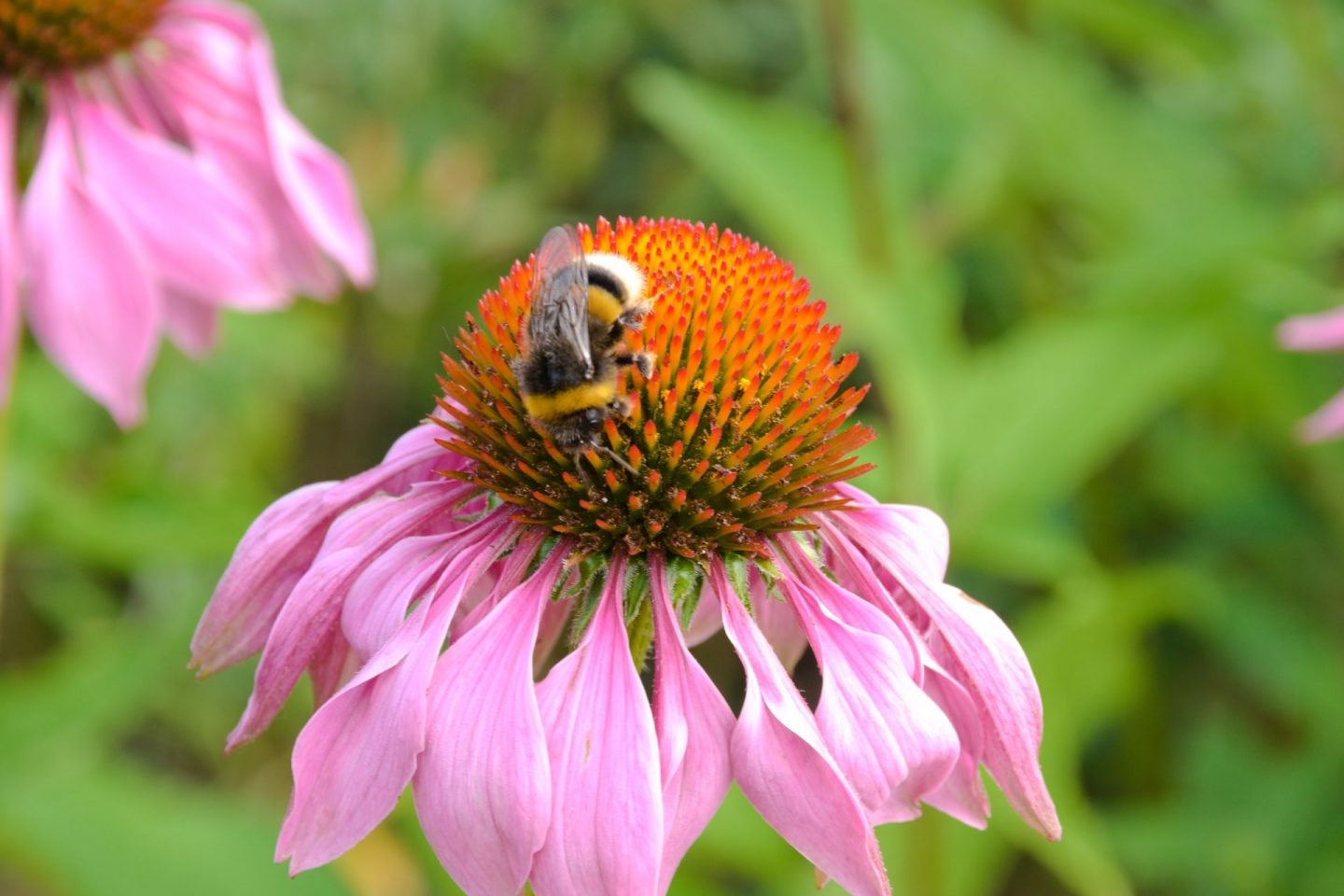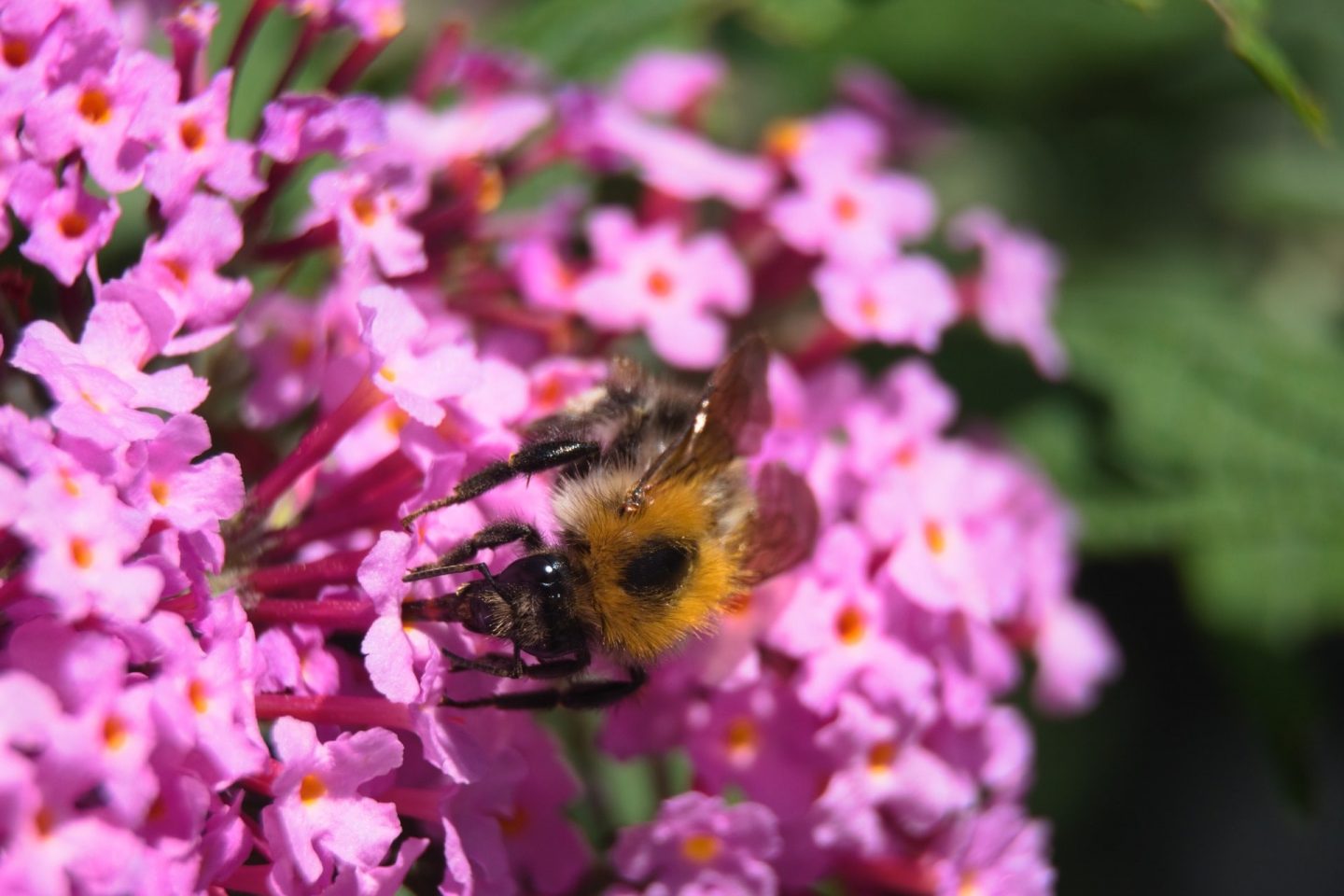

Bees keep our gardens flourishing with their pollinating efforts. Their role in human life is even more crucial than that.
The nation’s favourite gardener Monty Don, in his book 'Down To Earth', explains that 80 per cent of the Western diet depends on pollination by bees. That’s a huge reason for gardeners to help ‘nurture and conserve’ the British bee population.
Friends of the Earth warn that 35 species of UK bee face the threat of extinction. All UK species are at threat from intensive farming methods, and particularly pesticide use.
As gardeners, we can help bees by growing plants they like. In return, we get the reward from nurturing their wellbeing plus a vibrant, sensory garden.
Here are 10 suggested plants to make your garden more bee-friendly.
1. Echinacea purpurea

Echinacea purpurea is a long-flowering perennial (meaning, it lives for more than one year). It offers sustained interest for pollinators and can cope growing in most types of soil. It grows best in full sun.
2. Helenium ‘Waltraut’
This plant will bring intense orange to your flower borders with its daisy-style flowers. It looks great planted in drifts (a long, wandering line of the same type of plant). Bees will love it as it flowers from August to September.
3. Rudbeckia fulgida var. sullivantii ‘Goldsturm’

Rudbeckia will bring vibrant yellow to your garden in late summer, along with plenty of bees. You can enjoy its flowers from August to October.
4. Persicara bistorta ‘Superba’
This nectar-rich plant produces spikes of soft pink flowers. It looks lovely in flower beds and borders. It can grow happily in full sun or a partly shady spot and is happy growing in most types of soil.
5. Erysimum ‘Bowles Mauve’
This is a real favourite in our Thrive gardens. It flowers for months and produces elegant purple spikes which pull in bees, butterflies and moths.
6. Verbena bonariensis

Verbena bonariensis is a magnet for bees. It has heads of small purple flowers on tall stems that reach to 1.5 metre or more. It likes to grow in sunny spots, where the soil doesn't stay too wet.
7. Lavender

The scent and shape of lavender make it a popular choice for many gardeners. It's great for bees, as it stays in flower for many months. You can get English and French varieties of lavender. The English one has been shown to be the best at attracting bees. You can also find hybrids like L. x intermedia ‘Olympia’, which are really fantastic for pollinators.
8. Buddleja Davidii

Buddleja Davidii is known as the butterfly bush, but bees love it too. This shrub produces masses of cone-shaped flowers from summer to autumn. A variety of different flower colours are available, from purple version to pink or even white.
9. Penstemon ‘Sour Grapes’
This lovely plant produces bell-shaped flowers in a rich mix of mauve and lilac. It grows into a clump shape. It will flower for up to six months and while snails and slugs avoid it, bees can’t get enough of it.
10. Borage

The blue-purple flowers of borage will have the honey and bumble bees buzzing in your garden. It is an annual herb, meaning it lasts for one year only. It will grow happily in most types of soil, as long as they don't stay too wet. It's fantastic at supplying pollen and nectar to bees.